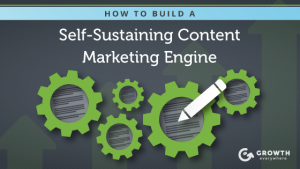Microsoft has opened its Windows Store for submissions from developers in readiness for the Windows 8 launch on October 26. The store will be available in 120 countries and will feature apps from individuals and companies.
Microsoft has taken some time to reach this point. The AppStore model has been incredibly successful for Apple, Google, Amazon and Microsoft’s own Xbox LIVE system. But this is the first time a store has been available on Windows. Until now, users have been left to hunt for applications on the web or in traditional software stores.
While Microsoft is late to the AppStore party, they appear to have learned from mistakes made by other companies. Refreshingly, the Windows Store has clearer guidelines and fewer restrictions than certain alternatives I could mention…
Money, Money, Money…
Let’s get down to business. You can sign-up for the Windows Store now.
Businesses with an MSDN license or free BizSpark membership won’t have to pay a penny. Neither will students registered on the DreamSpark program.
For the rest of us, individual membership costs $49 USD per year and company membership costs $99 USD per year. You can pay the equivalent in your own currency (wow — Microsoft doesn’t appear to be profiting from conversion costs, either!).
Like everyone else, Microsoft will claim 30% of any purchases made through the Store but it drops to 20% when your sales reach $25,000. You can monetize your app using a variety of means:
- offering free trials with easy conversion to the full paid version
- in-app purchases via the Windows Store
- advertising
- subscriptions, purchases or other billing mechanisms via a payment method of your choice.
For the latter two options, Microsoft won’t receive any revenue but you will need to adhere to further terms and conditions which ensure you’re not indulging in any nasty fraudulent shenanigans.
The Downsides
The Windows Store is built directly into the Windows 8. The OS may be a resounding success. It may be a complete failure. No one knows but, even if it exceeds expectations, it will take a while for users to migrate. Your app may not become profitable for some time.
The Upsides
Fortunately, the pros outweigh the cons.
Windows has sold 630 million licenses across 200+ countries and has a 90% share of the OS market. Even if Windows 8 is a disaster of Vista-like proportions, the potential market is huge and will grow rapidly. If you’re there at the start, your application will reach a massive customer base with comparatively little competition.
The Windows Store also offers economic opportunities for web developers. For example, a small Metro — sorry, Windows 8 UI style — app could expose your web application to further users and provide alternative monetization options.
Windows 8 apps can be written in any .NET language or HTML5, CSS3 and JavaScript — you already have the skills and there’s no need to buy an SDK or learn new technologies. Microsoft provide free tools should you need them.
However, there’s one benefit which will please developers most: clear certification requirements and a transparent approval process. You won’t be gambling your development efforts against the arcane whims of a faceless compliance system.
Interested? I’m tempted. Microsoft provide a range of Windows 8 development and Store resources and tutorials. You can sign-up from today.
Will the Windows Store succeed? Does Windows need an AppStore? Are you considering a submission? Have you already done so? Comments welcome…
I really shouldn’t need to make this statement but, since I will be accused both pro and anti-Microsoft bias, I will put the record straight. This article presents my own opinions; they do not necessary match yours or those of Microsoft and SitePoint. I do not work for Microsoft and they did not pay for the post. SitePoint has run Microsoft advertising and promotions but this is not part of one and, besides, I am not a SitePoint employee. SitePoint give me complete editorial freedom to write, rant or ramble-on about whatever subjects I choose (it must terrify them!)
Craig is a freelance UK web consultant who built his first page for IE2.0 in 1995. Since that time he's been advocating standards, accessibility, and best-practice HTML5 techniques. He's created enterprise specifications, websites and online applications for companies and organisations including the UK Parliament, the European Parliament, the Department of Energy & Climate Change, Microsoft, and more. He's written more than 1,000 articles for SitePoint and you can find him @craigbuckler.




